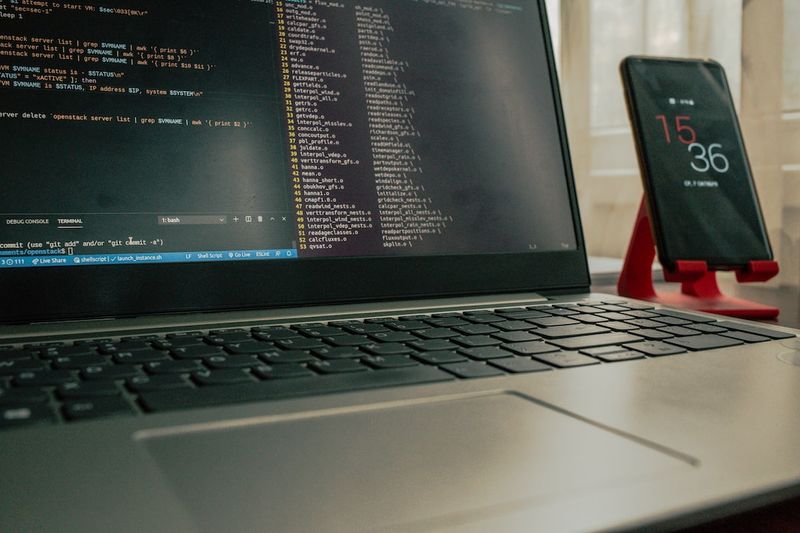Cybersecurity Threats: The Emergence of Rhysida Ransomware and Lumar Stealer
The Rise of Rhysida Ransomware
In recent months, a new and sophisticated strain of ransomware has emerged, posing a significant threat to Brazil’s popular PIX payment system. Known as Rhysida, this ransomware-as-a-service (RaaS) operation has been active since May of last year. Its developers have continuously evolved its capabilities, making it an increasingly potent threat.
Researchers from Kaspersky, a leading cybersecurity company, have detailed the unique features and design that set Rhysida apart from other ransomware strains. Unlike most ransomware, Rhysida possesses a self-deletion mechanism and is compatible with pre-Windows 10 versions of Microsoft. This compatibility expands Rhysida‘s reach, and its use of C++ programming language and MinGW and shared libraries indicates a high level of sophistication in its development.
The Capabilities of Lumar Stealer
Rhysida is not acting alone. It is often accompanied by a complementary malware-as-a-service (MaaS) infostealer called Lumar. Deployed in conjunction with Rhysida, Lumar targets users of the PIX payment system, aiming to steal valuable data from its victims.
Lumar first emerged in July of last year and has proven to be a compact yet highly functional data-stealing malware. Its capabilities include stealing data from Telegram sessions, passwords, cookies, autofill information, desktop files, and even cryptographic wallets. What sets Lumar apart is its efficient data collection, made possible by the use of three separate threads. Additionally, the malware author provides user-friendly features such as statistics and data logs through the MaaS.
The Ongoing Threat and Rapid Adaptation
The Kaspersky team has been tracking the ongoing ransomware campaign targeting PIX since December 2022. Their findings highlight the challenges faced by Rhysida during its initial configuration, revealing a group that displays rapid adaptation and a steep learning curve. This adaptability poses a significant concern, as it suggests that the threat actors behind Rhysida and Lumar can quickly overcome obstacles and continue their malicious activities.
The deployment of Rhysida and Lumar underscores the ever-evolving nature of cyber threats and how malicious actors capitalize on vulnerabilities to target critical systems and individuals. The PIX payment system is widely used in Brazil, making it an attractive target for cybercriminals seeking financial gain.
The Importance of Internet Security
Ransomware as a Lucrative Business Model
The emergence of Rhysida and Lumar highlights the continued prevalence of ransomware attacks and the ever-increasing financial incentives for cybercriminals. The effectiveness of ransomware attacks, coupled with the ability to sell malware and hacking tools through RaaS and MaaS models, has turned cybercrime into an organized and profitable industry.
Data Security and Individual Privacy
These ransomware attacks not only pose a financial risk to organizations and individuals but also endanger their privacy and personal information. By gaining unauthorized access to sensitive data, threat actors can cause significant harm and potentially exploit victims in various ways.
Individuals and organizations must prioritize data security in an era where cybercriminals aggressively target and exploit vulnerabilities. Robust security measures, regular software updates, and user education are all crucial components of maintaining effective cybersecurity defenses.
Actions to Safeguard Against Ransomware
Enhanced Security Measures
To mitigate the risk of falling victim to ransomware attacks like Rhysida and Lumar, it is imperative to implement enhanced security measures. This includes using up-to-date antivirus software, regularly installing security patches, and employing strong passwords that are not easily guessable. Additionally, multifactor authentication should be enabled whenever possible to add an extra layer of protection.
Regular Backups
Regularly backing up critical data is essential to safeguarding against ransomware attacks. By maintaining offline backups on separate devices or in cloud-based storage, individuals and organizations can restore their data in the event of a successful attack and avoid paying ransoms to threat actors.
User Education and Vigilance
User education is a vital component of combating ransomware threats. Individuals should be cautious when opening email attachments or clicking on suspicious links, as these are common delivery methods for malware. Vigilance and skepticism when interacting with unfamiliar websites or unexpected communications are essential.
Conclusion
The emergence of the Rhysida ransomware and its partnership with the Lumar stealer highlights the ever-evolving nature of cyber threats. These sophisticated attacks, targeting Brazil’s popular PIX payment system, demonstrate the need for increased internet security measures and user education to combat the pervasive reach of cybercriminals.
To protect sensitive data and privacy, individuals and organizations must remain vigilant, implement enhanced security measures, regularly back up critical data, and educate themselves on the latest cybersecurity best practices. As cybercriminals continue to refine their tactics, it is crucial that we adapt and remain proactive in our efforts to safeguard against future threats.

<< photo by Dan Nelson >>
The image is for illustrative purposes only and does not depict the actual situation.
You might want to read !
- Rockwell Automation Issues Urgent Alert to Customers on Critical Cisco Zero-Day Vulnerability Impacting Stratix Switches
- The Rise of Fractional AppSec Teams: Are They Essential for Small Companies?
- The Rising Need for Fractional AppSec Teams in Small Companies
- Exploring the Subterfuge: Unveiling the Stealth Techniques of the ‘Operation Triangulation’ iOS Attack
- Oman’s Economic Reinforcement: Paving the Way for Sustainable Growth
- Adlumin Raises $70M in Funding to Enhance Security Solutions for Mid-Market Enterprises
- The Growing Threat: Exploring the Alarming Rise of Ransomware Attacks on the Healthcare Sector
- Authentication Outage: Why a ‘Fail Safe’ Approach Is Crucial
- The Dark Connection: Analyzing the Nexus of RaaS, Cryptocurrency, and the Hive Ransomware
- The Evolution of Zero-Day Attacks: Cisco Devices Continue to Be Prime Targets
- The Rise of Cyber Espionage: Unraveling the Intricate Web of Altered Cisco Devices
- The Rise of ExelaStealer: A Cost-Effective Cybercrime Menace
- Canada’s Lawmakers Under Attack: Unveiling China’s ‘Spamouflage’ Disinformation Campaign
- “Assessing the Fallout: Analyzing the University of Michigan’s August Data Breach and Its Implications”
- Rising Threat: The Role of Lost and Stolen Devices in Data Breaches
- Protecting Data While Fostering Collaboration: The New Imperatives for Modern Enterprises
- Exploiting the Israeli-Hamas Conflict: Rise of Online Scammers




